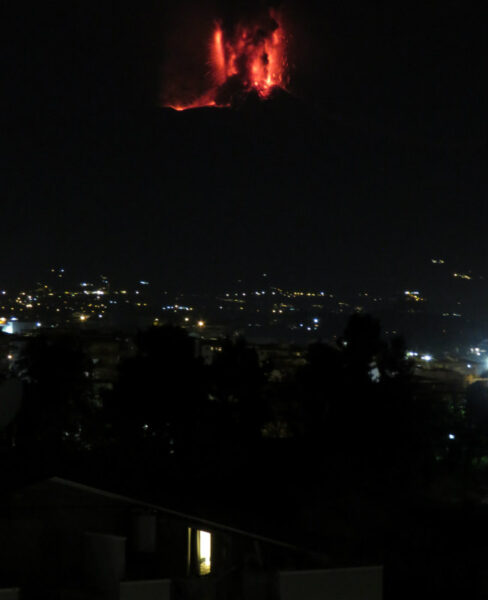Mount Etna is a wonderful sight that everyone would like to admire, one time or another. It is not the classic volcano that produces long lava flows – except in rare cases – but it expresses the characteristics of many volcanoes all together. The volcanologists of Catania say they are “lucky” to have such an “eruptive encyclopedia” before their eyes, all the time. And over time, they are able to recognize the characteristics and signals of the volcano even just from the noise. This happens, for example, with explosions and lava fountains.
The “Strombolian” explosions
When a volcano erupts with “a lot of noise”, or with well-defined rhythmic explosions, it is called a Strombolian eruption. The name derives from Stromboli, the first volcano on which the phenomenon was classified. Usually this type of explosion is short-lived but repeats every few minutes. Those who observe them from the valley will see real “spouts” of fire, which throw incandescent boulders into the sky for a few seconds, then calm down and then start again.
 high lava fountain seen from the city
high lava fountain seen from the city
The lava fountain
The so-called lava fountain is a very powerful jet, which can reach considerable heights, driven by constant and rich gas leaks. It is, in reality, a series of explosions so continuous and close in time that they form a single flame. The height to which the lava fountain reaches causes material to fall continuously, just as the water from any fountain falls continuously. It also produces a different noise, very recognizable, similar to thunder rather than an explosion. For volcanologists it can even be… music!
The “music” of lava
In 2022, scientists at the INGV in Catania produced a real study on the “musicality” of lava fountains. In collaboration with colleagues from the USA and New Zealand, they figured out how to interpret the sound of the lava fountain to prevent and predict what type of eruption is about to happen. The “music”, to be exact, is not produced by the noise of the explosions but by “infrasonic” signals that precede the formation of the lava fountain. Infrasound – we read in the article – is a low frequency acoustic signal, inaudible to humans, whose recordings using special microphones are increasingly used by volcanological observatories for monitoring.
Both on Mount Etna
Both single explosions and lava fountains can be seen on Etna. It could also happen to find yourself on an excursion with our guides and see a paroxysm start. Maybe you have gone trekking in a forest, with the “musical” background of the roars of Etna to the point that you will have become accustomed to it. Suddenly, however, these simple rumblings of the volcano change … you could hear very powerful explosions and then a continuous dark rumble. At that point, even without seeing it, you will know that the lava fountain is underway.
Should we be afraid?
Volcanoes always deserve respect and fear. But not a negative fear. If you are in the company of good guides, you won’t have to be afraid even when faced with a lava fountain. What matters is to always keep a safe distance and move, as quickly as possible, in the direction opposite the wind’s blow. If the wind blows from north to south, to admire the fountain, go to the north… so as to be “out of range” in case of falling materials. (PHOTOS BY G MUSUMECI)